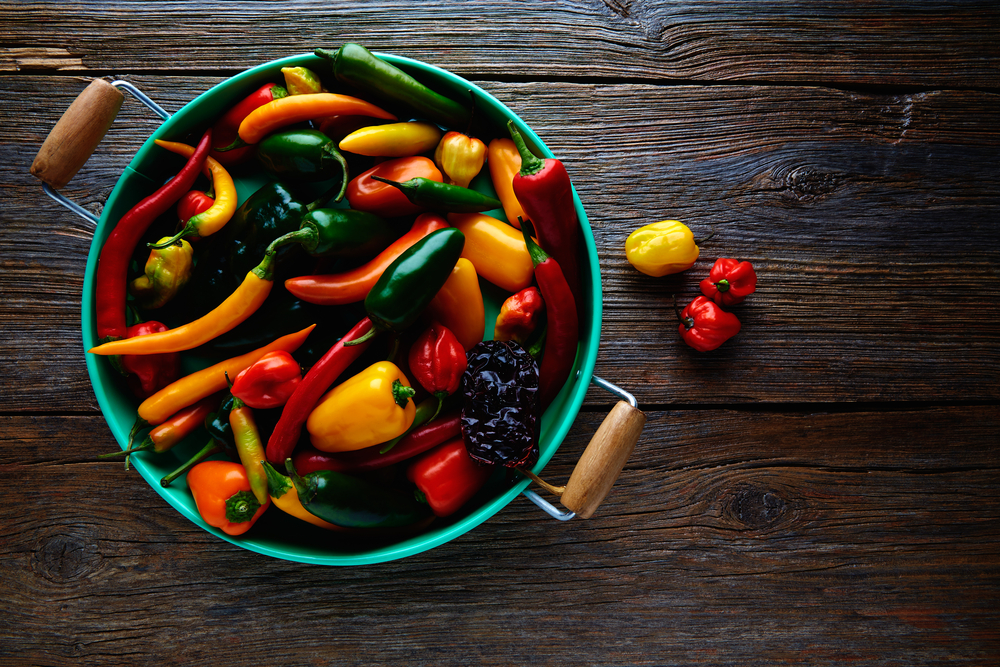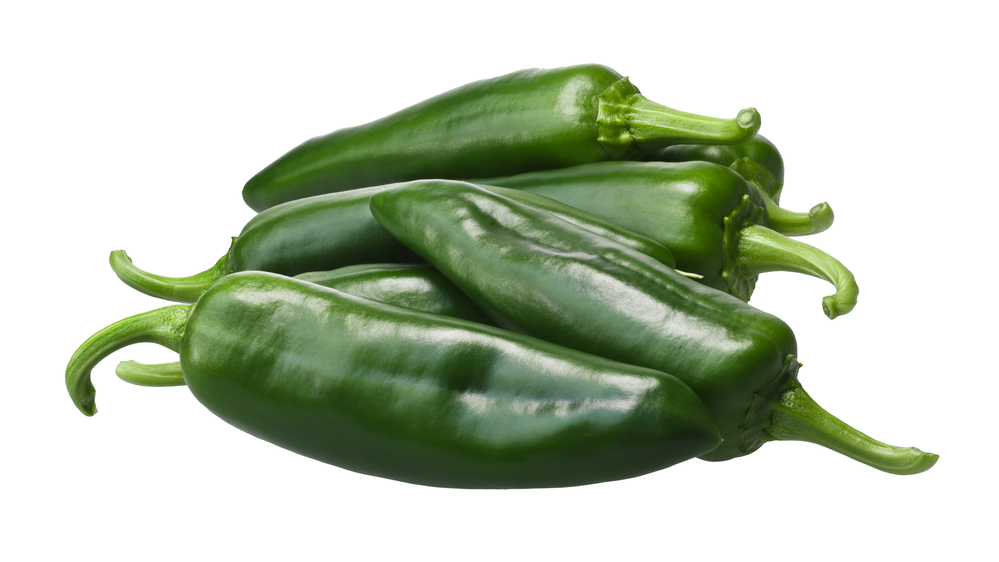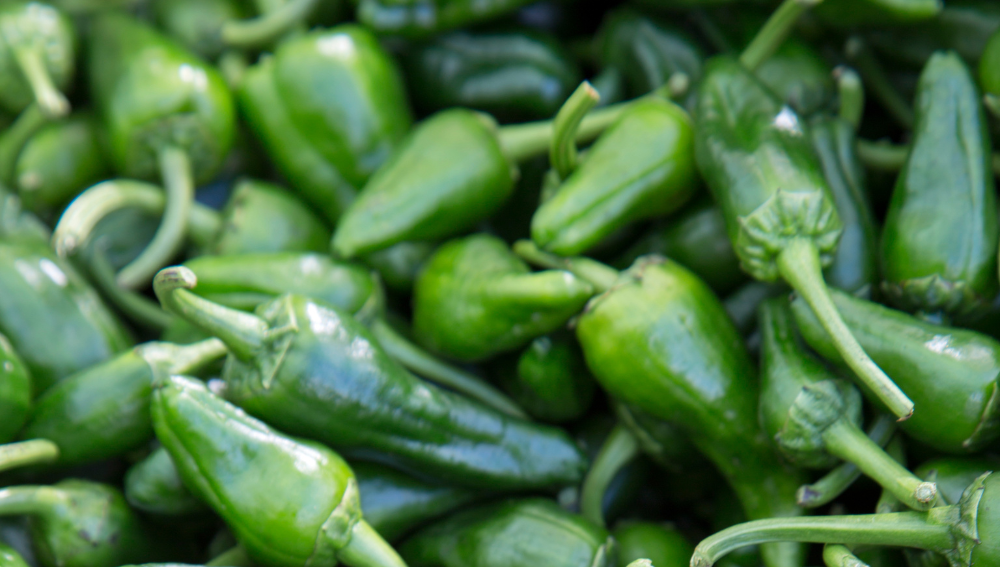As a spice lover, I have always been intrigued by the differences between chili flakes and red pepper flakes.
While they may seem interchangeable, there are actually significant differences between the two. In this article, I will explore the key differences between chili flakes and red pepper flakes, including their origins, appearance, taste, and heat level.
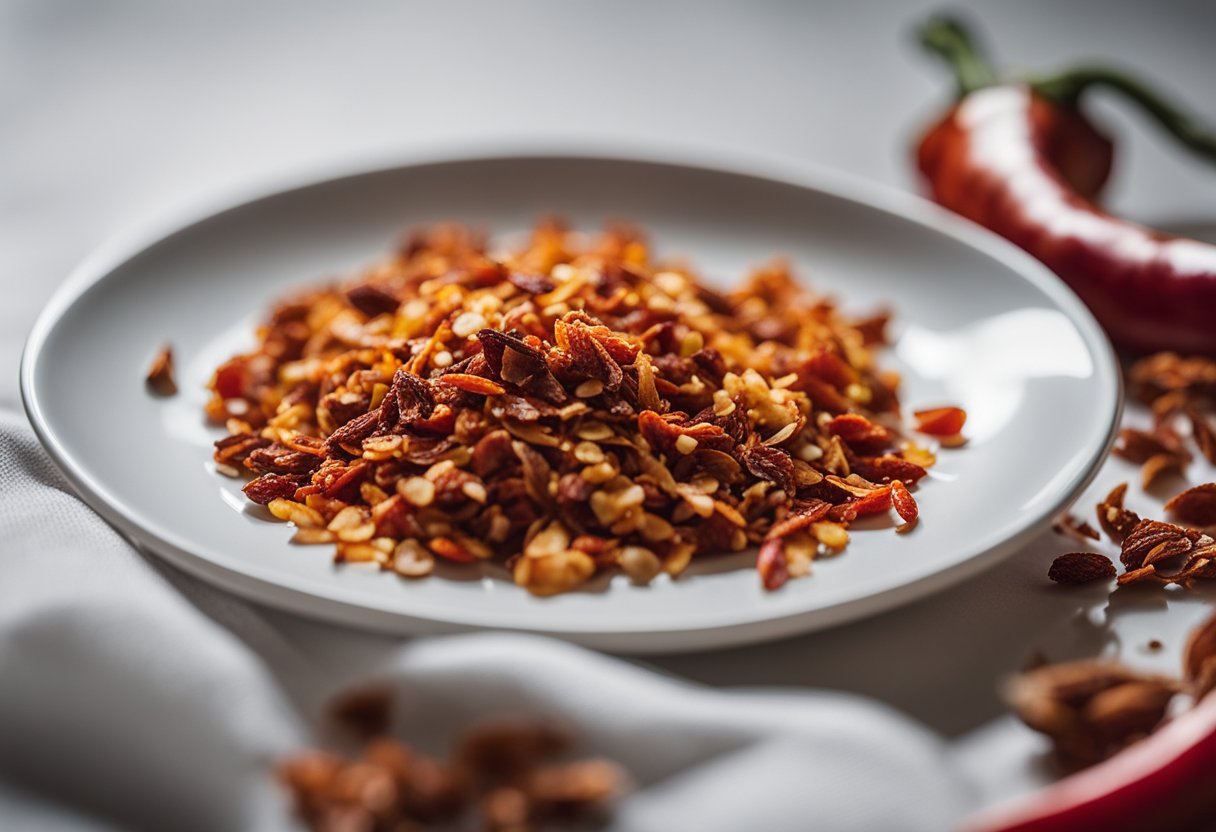
Understanding chili flakes and red pepper flakes is essential for anyone who enjoys adding a bit of spice to their meals.
Chili flakes are made from a single type of pepper, while red pepper flakes are made from a blend of different peppers. This difference in composition can lead to variations in heat level and taste, which is important to keep in mind when cooking with either spice.
Origins and variety also play a role in the differences between chili flakes and red pepper flakes. Chili flakes are typically made from dried cayenne peppers, while red pepper flakes can be made from a variety of peppers, including cayenne, ancho, and bell peppers.
This difference in variety can impact the flavor profile of the spice, making some better suited for certain dishes than others.
Key Takeaways
- Chili flakes are made from only one pepper type, while red pepper flakes are made from a mixture of peppers.
- Chili flakes are hot, but in comparison, red pepper flakes are hotter.
- Chili flakes are best for meals that require a bit of spice, while red pepper flakes are often used in pizza, pasta, and stir-fry dishes.
Understanding Chili Flakes and Red Pepper Flakes
As a food lover, I enjoy experimenting with different spices and flavors to enhance the taste of my meals. Two popular spices that I often use are chili flakes and red pepper flakes.
While they may look similar, there are some key differences between these two spices that are worth exploring.
Chili Flakes
Chili flakes, also known as crushed red pepper flakes, are made from one type of pepper – chili pepper. They are created by drying the chili peppers and crushing them into small flakes.
Chili flakes are known for their heat and spiciness, which can vary depending on the type of chili pepper used. Some popular types of chili peppers used to make chili flakes include cayenne, ancho, and bird’s eye chili.
In addition to their heat, chili flakes also add a unique flavor to dishes. They have a slightly smoky and earthy taste, which can complement a variety of foods. I often use chili flakes in pasta sauces, soups, and stir-fry dishes to add a spicy kick.
Red Pepper Flakes
Red pepper flakes are similar to chili flakes in that they are also made from dried peppers. However, unlike chili flakes, red pepper flakes are made from a variety of peppers, not just one type.
This means that the heat and spiciness of red pepper flakes can vary greatly depending on the types of peppers used. Some common peppers used to make red pepper flakes include cayenne, jalapeno, and habanero.
Red pepper flakes also have a distinct flavor, which can be described as slightly sweet and smoky. They are often used in pizza toppings, marinades, and rubs to add a spicy flavor.
The Difference Between Chili Flakes and Red Pepper Flakes
The main difference between chili flakes and red pepper flakes is the type of pepper used. Chili flakes are made from one type of pepper, while red pepper flakes are made from a variety of peppers.
This means that chili flakes have a more consistent heat and flavor, while red pepper flakes can vary greatly.
When using these spices in your cooking, it’s important to keep in mind their different heat levels. If you prefer a milder spice, you may want to use chili flakes, while those who enjoy a spicier kick may prefer red pepper flakes.
In conclusion, both chili flakes and red pepper flakes are great spices to have in your kitchen. They add heat, flavor, and a unique taste to a variety of dishes. Understanding the differences between these two spices can help you choose the right one for your cooking needs.
Origins and Variety
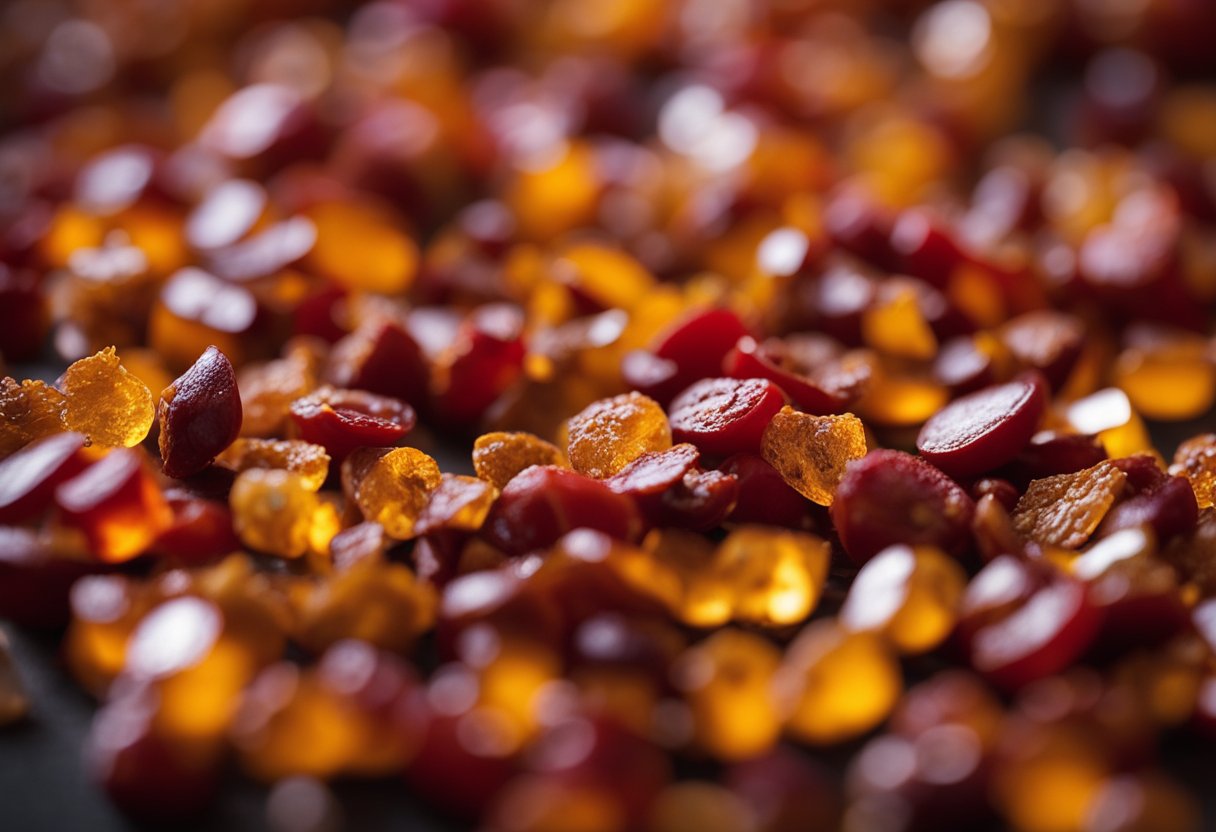
Chili flakes and red pepper flakes are both made from dried and crushed chili peppers, but they differ in their origins and variety.
Chili flakes are made from only one type of pepper, the chili pepper, while red pepper flakes are more of an umbrella term for multiple types of peppers that have been combined together.
The most common type of pepper used in red pepper flakes is cayenne pepper, which is known for its heat and spiciness.
Cayenne peppers are long and skinny with a bright red color and are cultivated in Mexico and other parts of the world. They are often used in spicy dishes and sauces.
Another type of pepper that can be found in red pepper flakes is chipotle pepper. Chipotle peppers are smoked and dried jalapeno peppers that have a smoky flavor and are often used in Mexican cuisine.
Aleppo pepper is another type of pepper that can be found in red pepper flakes. It is a mild pepper with a fruity flavor that is commonly used in Middle Eastern cuisine.
Other peppers that can be used in red pepper flakes include bell peppers, jalapeno peppers, Anaheim peppers, Fresno peppers, and Urfa Biber peppers. Each type of pepper has a unique flavor and heat level, which can affect the overall taste of the dish.
Overall, the variety of peppers used in red pepper flakes makes them a more complex ingredient than chili flakes. However, chili flakes can still add a nice kick of heat to dishes without being too overwhelming.
Appearance and Color
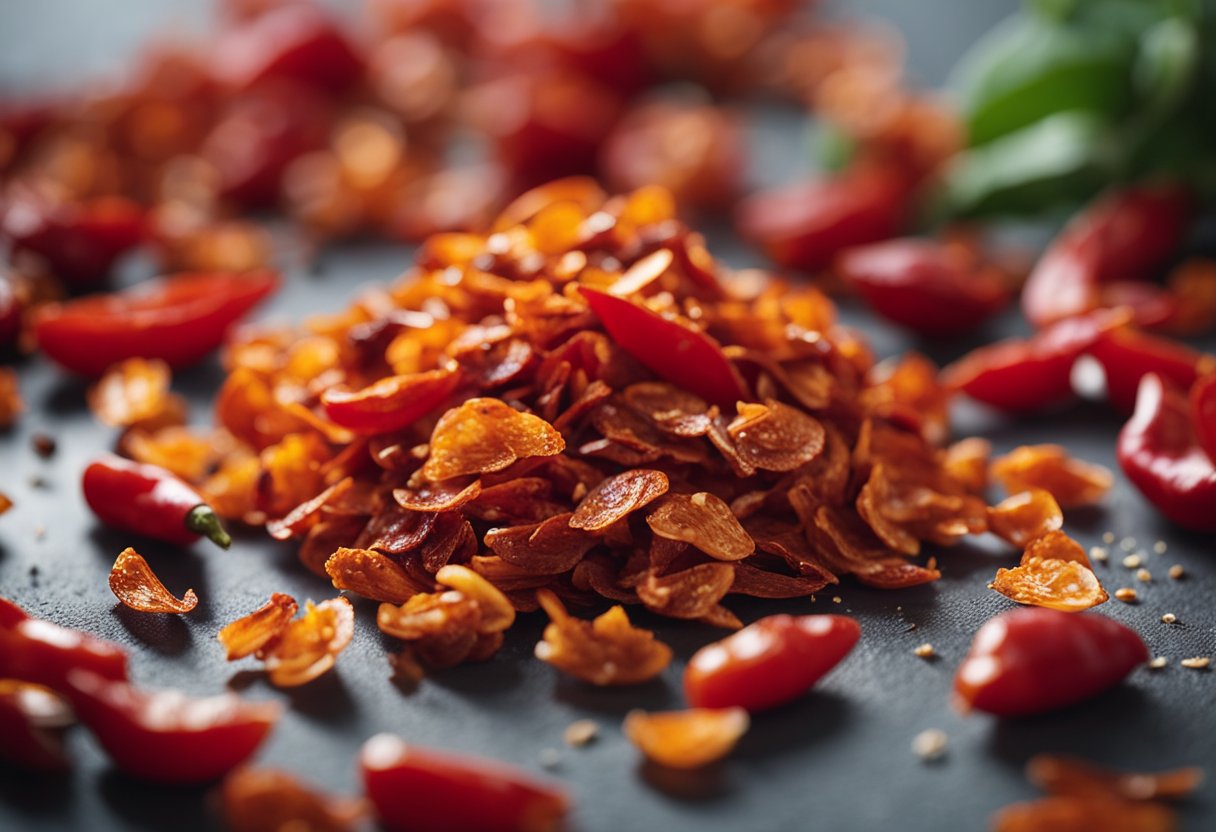
When it comes to appearance and color, chili flakes and red pepper flakes can be quite similar. Both are typically small, dried pieces of red pepper that have been crushed or ground into flakes.
However, there are some differences in color and appearance between the two.
Chili flakes are typically made from one type of pepper, usually a variety of chili pepper. As a result, they tend to have a consistent color and appearance.
Chili flakes are usually a bright red color, although they can sometimes have a slightly orange or yellowish tint. The flakes themselves are usually small and thin, with a slightly crinkled or wrinkled texture.
Red pepper flakes, on the other hand, can be made from a variety of different peppers. As a result, they can come in a range of colors and appearances.
Some red pepper flakes are a deep red color, while others may be a brighter red or even have shades of orange or brown. The flakes themselves can also vary in size and texture, from small and thin to larger and more irregularly shaped.
Overall, both chili flakes and red pepper flakes have a similar appearance and color. However, chili flakes are typically made from one type of pepper and tend to have a more consistent appearance, while red pepper flakes can be made from multiple types of peppers and can vary in color and texture.
Taste and Heat Level
When it comes to taste and heat level, there are some differences between chili flakes and red pepper flakes.
Chili flakes are made from only one type of pepper, while red pepper flakes are made from a mixture of different types of peppers. This difference in the types of peppers used gives each type of flakes a unique taste.
Chili flakes have a milder taste compared to red pepper flakes, which are generally hotter. Chili flakes are perfect for people who want a little spice in their food without it being too overwhelming.
On the other hand, red pepper flakes are perfect for those who love spicy food and want to add a little kick to their dishes.
The heat level of chili flakes and red pepper flakes can be measured using the Scoville scale. This scale measures the amount of capsaicin in peppers, which is what gives them their spicy flavor.
Chili flakes typically have a lower rating on the Scoville scale compared to red pepper flakes, making them milder in terms of heat.
If you’re looking for a little spice in your food, but don’t want it to be too overwhelming, then chili flakes are a great option.
They offer a mild heat level that won’t overpower the other flavors in your dish. However, if you’re a fan of spicy food and want to add some heat to your meals, then red pepper flakes are the way to go.
In conclusion, the taste and heat level of chili flakes and red pepper flakes are different. Chili flakes have a milder taste and heat level, while red pepper flakes are hotter. Which one you choose depends on your preference for spice and unique taste.
Types of Dishes and Their Uses
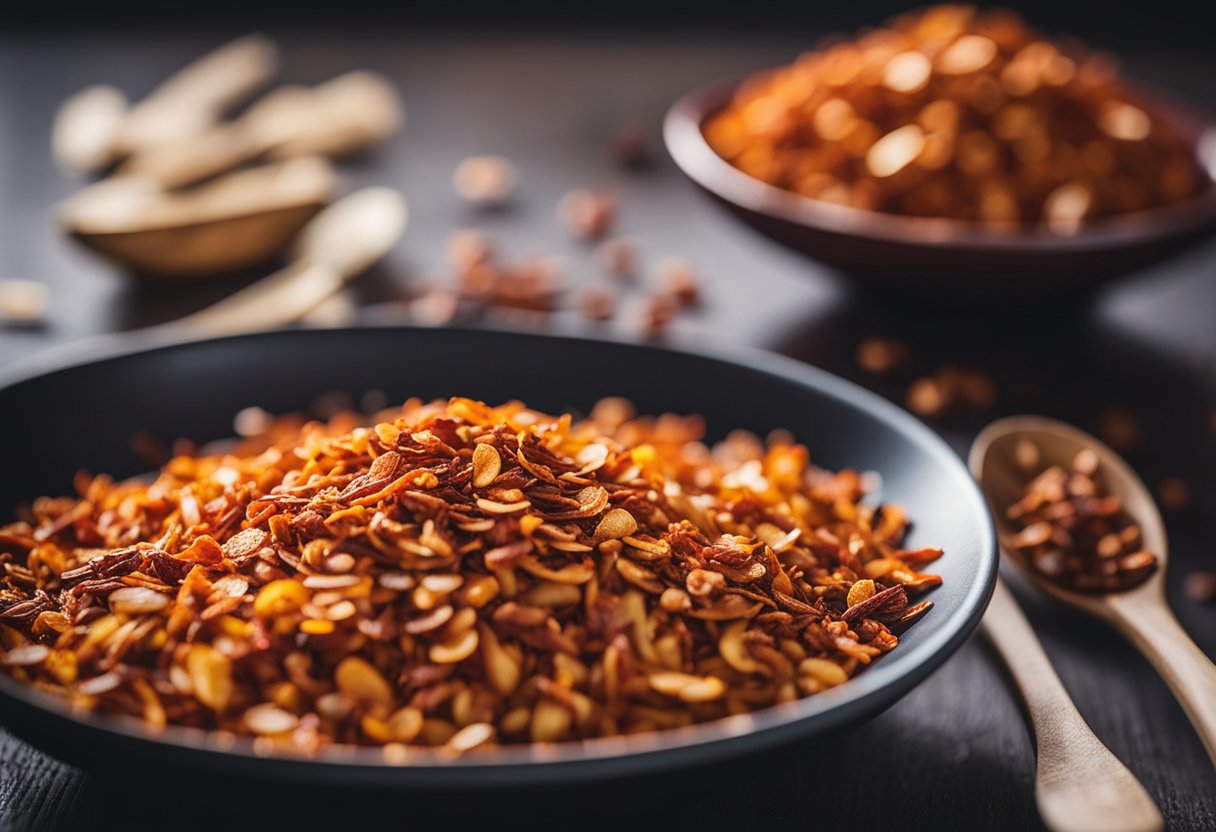
When it comes to cooking, chili flakes and red pepper flakes are both versatile ingredients that can be used in a variety of dishes.
Here are some of the most common dishes and their uses:
- Pizza: Both chili flakes and red pepper flakes are excellent toppings for pizza. They add a nice kick of heat to the pizza and can be sprinkled on top of the cheese or added to the sauce.
- Sauces: Chili flakes and red pepper flakes are great additions to sauces, especially tomato-based sauces. They can be added to the sauce while it’s cooking or sprinkled on top of the finished dish.
- Pasta: Chili flakes and red pepper flakes are both great additions to pasta dishes. They can be added to the sauce or sprinkled on top of the finished dish.
- Soups: Both chili flakes and red pepper flakes are great in soups, especially spicy soups like chili. They can be added to the soup while it’s cooking or sprinkled on top of the finished dish.
- Salads: Chili flakes and red pepper flakes can be used to add some heat to salads. They can be sprinkled on top of the salad or added to the dressing.
- Meat and Chicken: Chili flakes and red pepper flakes are both great seasonings for meat and chicken. They can be added to marinades or sprinkled on top of the finished dish.
- Chili con Carne: Chili flakes are a common ingredient in chili con carne. They add heat and flavor to the dish.
- Pasta Dishes: Chili flakes and red pepper flakes are great additions to pasta dishes. They can be added to the sauce or sprinkled on top of the finished dish.
- Savory Dishes: Chili flakes and red pepper flakes can be used to add heat and flavor to a variety of savory dishes.
- Stews: Chili flakes and red pepper flakes are great in stews, especially spicy stews. They can be added to the stew while it’s cooking or sprinkled on top of the finished dish.
In summary, chili flakes and red pepper flakes are both great ingredients to have in your spice cabinet. They can be used in a variety of dishes to add some heat and flavor.
Substitutes and Alternatives
When it comes to chili flakes and red pepper flakes, there are a variety of substitutes and alternatives available. Whether you are looking for a milder option or a different flavor profile, there are plenty of options to choose from.
One popular substitute for chili flakes is ground cayenne pepper. This spice is made from dried and ground cayenne peppers and has a similar heat level to chili flakes. It can be used in the same way as chili flakes, but it has a slightly different flavor profile.
Cayenne pepper has a more earthy and slightly sweet taste, while chili flakes have a more intense and spicy flavor.
Another option is to use dried peppers. There are many different types of dried peppers available, including bell peppers, jalapeno peppers, Anaheim peppers, Fresno peppers, cayenne peppers, and habanero peppers.
Each type of pepper has a different heat level and flavor profile, so it’s important to choose one that complements the dish you are making. Dried peppers can be ground into a powder or crushed into flakes, depending on your preference.
Paprika is another alternative to chili flakes. This spice is made from ground dried peppers and has a mild, sweet flavor. It’s a good option for those who want to add some color and flavor to their dishes without adding too much heat.
If you’re looking for a more intense heat, ground habanero pepper is a good option. This spice is made from dried and ground habanero peppers, which are one of the hottest peppers available. It’s important to use this spice sparingly, as a little goes a long way.
Finally, Chile de Arbol Powder is another good substitute for chili flakes. This powder is made from dried Chile de Arbol peppers, which have a similar heat level to cayenne peppers.
It has a slightly smoky and nutty flavor and can be used in the same way as chili flakes.
Overall, there are many substitutes and alternatives available for chili flakes and red pepper flakes. Choosing the right one depends on your personal preferences and the dish you are making.
Cooking with Chili and Red Pepper Flakes
As a lover of spicy food, I always have a jar of chili flakes and red pepper flakes in my pantry. These two spices are often used interchangeably, but they are not the same.
Chili flakes are made from only one pepper type – chilies, while red pepper flakes are made from a mixture of peppers. Chili flakes are hot, but in comparison, red pepper flakes are hotter.
Chili and red pepper flakes are versatile ingredients that can be used in many dishes. They are great for adding heat to soups, stews, and chili. They can also be used in marinades, dressings, and rubs.
When cooking with chili and red pepper flakes, it’s important to remember that a little goes a long way. Start with a small amount and taste as you go. You can always add more, but you can’t take it away.
Chili and red pepper flakes also add a unique flavor to dishes. They are not just about adding heat. Chili flakes have a slightly sweet and smoky flavor, while red pepper flakes have a sharper, more pungent taste.
In addition to using chili and red pepper flakes in savory dishes, they can also be used in sweet dishes. A pinch of chili flakes can add a subtle heat to chocolate desserts, and red pepper flakes can be used in fruit salads for a spicy kick.
In summary, chili and red pepper flakes are great ingredients to have on hand in the kitchen. They add heat and flavor to many dishes and are versatile enough to be used in both savory and sweet dishes. Just remember to use them sparingly and taste as you go.
Comparison of Different Types of Chili and Red Pepper Flakes
When it comes to chili and red pepper flakes, there are a variety of options available that can add heat and flavor to your dishes.
In this section, I will compare different types of chili and red pepper flakes and provide some information on their texture, heat level, and flavor.
Texture
The texture of chili and red pepper flakes can vary depending on the type of pepper used and the processing method.
Some flakes are fine and powdery, while others are coarser and more chunky. The texture of the flakes can affect the way they distribute in a dish, as well as the overall mouthfeel.
Korean Chili Flakes
Korean chili flakes, also known as gochugaru flakes, are a staple in Korean cuisine and are made from sun-dried red peppers.
They have a medium heat level and a slightly sweet and smoky flavor. The flakes are coarser than some other types of chili flakes, which can make them a good choice for adding texture to dishes.
Sichuan Chili Flakes
Sichuan chili flakes are made from a type of red pepper that is native to the Sichuan province of China. They have a medium to high heat level and a unique numbing sensation that is characteristic of Sichuan cuisine.
The flakes are typically quite fine and powdery, which can make them a good choice for seasoning soups and stews.
Chipotle Chili Flakes
Chipotle chili flakes are made from smoked jalapeño peppers and have a medium heat level and a smoky flavor. The flakes are typically coarser than some other types of chili flakes, which can make them a good choice for adding texture to dishes.
Aleppo Chili Flakes
Aleppo chili flakes are made from a type of red pepper that is native to Syria and Turkey. They have a medium heat level and a fruity and slightly salty flavor. The flakes are typically quite fine and powdery, which can make them a good choice for seasoning salads and dips.
Urfa Biber Chili Flakes
Urfa biber chili flakes are made from a type of red pepper that is native to Turkey and have a medium heat level and a smoky and slightly sweet flavor. The flakes are typically quite fine and powdery, which can make them a good choice for seasoning meat dishes.
Gochugaru Flakes
Gochugaru flakes are a staple in Korean cuisine and are made from sun-dried red peppers. They have a medium heat level and a slightly sweet and smoky flavor. The flakes are coarser than some other types of chili flakes, which can make them a good choice for adding texture to dishes.
In conclusion, there are many different types of chili and red pepper flakes available, each with its own unique texture, heat level, and flavor.
When choosing flakes for a dish, it’s important to consider the texture of the flakes and how they will distribute in the dish, as well as the overall flavor profile of the flakes.
Preparation and Composition

When it comes to chili flakes and red pepper flakes, the preparation and composition of each can vary. Chili flakes are typically made from a single type of pepper, such as cayenne or Thai bird’s eye chili, which is dried and crushed to create small flakes.
On the other hand, red pepper flakes are often made from a mixture of peppers, which can include cayenne, ancho, and bell peppers, among others. These peppers are dried and then ground to create a coarser texture than chili flakes.
One key difference between the two is that red pepper flakes often have seeds included, while chili flakes typically have the seeds removed. This can affect the level of heat in the flakes, as the seeds contain capsaicin, the compound responsible for the spiciness of peppers.
Red pepper flakes tend to have a more uneven heat level due to the inclusion of seeds, while chili flakes have a more uniform heat level.
Another aspect to consider is the composition of the flakes themselves. Chili flakes are made up of only one type of pepper, while red pepper flakes can contain multiple types of peppers. This can lead to differences in flavor and aroma between the two.
Chili flakes tend to have a more earthy or fruity flavor, while red pepper flakes have a more straightforward heat.
In terms of texture, chili flakes tend to be more uniform in size and shape, while red pepper flakes can have a more varied appearance, with some flakes containing ground seeds.
This can affect the way the flakes are used in cooking, as chili flakes may be better suited for certain dishes, such as spice rubs or marinades, while red pepper flakes are often used in pizza, pasta, and stir-fry dishes.
Overall, the preparation and composition of chili flakes and red pepper flakes can have a significant impact on their flavor, heat level, and texture. Understanding these differences can help you choose the right type of flakes for your next spicy dish.
Recipes Incorporating Chili and Red Pepper Flakes
I love incorporating chili and red pepper flakes into my recipes to add a little kick of heat and flavor. While they may seem interchangeable, there are some key differences between the two that can affect the taste of your dish.
Chili flakes are made from only one type of pepper – chilies. They are dried and crushed, resulting in a flaky texture.
Red pepper flakes, on the other hand, are a mixture of different types of peppers, including bell peppers and cayenne pepper. They are also dried and crushed, but tend to have a finer texture than chili flakes.
When it comes to recipes, both chili and red pepper flakes can be used in a variety of dishes.
Here are a few ideas to get you started:
- Spaghetti Aglio e Olio: This simple pasta dish is elevated with the addition of chili flakes. Sauté garlic and chili flakes in olive oil, then toss with cooked spaghetti and top with Parmesan cheese.
- Homemade Pizza: Sprinkle red pepper flakes on top of your homemade pizza for an added kick of heat. You can also mix chili flakes into the pizza sauce for a spicy twist.
- Roasted Vegetables: Toss your favorite vegetables with olive oil, salt, pepper, and a pinch of chili flakes or red pepper flakes before roasting in the oven. The heat from the flakes will complement the sweetness of the roasted vegetables.
Overall, whether you choose to use chili flakes or red pepper flakes in your recipes, it’s important to remember that a little goes a long way. Start with a small amount and add more as needed to achieve the desired level of heat.
Related posts:
Frequently Asked Questions
What is the difference between crushed red pepper and chili flakes?
Crushed red pepper and chili flakes are both made from dried peppers, but they come from different types of peppers. Chili flakes are made from one type of pepper, while crushed red pepper is a blend of different types of peppers.
Additionally, chili flakes tend to be a bit milder than crushed red pepper, which can vary in heat level depending on the blend of peppers used.
Can I substitute red pepper flakes for chili flakes in a recipe?
Yes, you can substitute red pepper flakes for chili flakes in most recipes. Keep in mind that red pepper flakes are typically spicier than chili flakes, so you may want to use less if you’re sensitive to heat.
Which is spicier, red pepper flakes or cayenne pepper?
Cayenne pepper is generally considered to be hotter than red pepper flakes, although the heat level can vary depending on the specific variety of pepper used to make the flakes.
Where can I find high-quality chili flakes?
You can find high-quality chili flakes at specialty spice shops or online. Look for flakes that are made from high-quality peppers and have a bright, fresh aroma.
Are red pepper flakes and crushed red pepper the same thing?
Yes, red pepper flakes and crushed red pepper are the same thing. They are a blend of different types of dried peppers that have been crushed or ground into flakes.
What are some alternative uses for chili flakes besides cooking?
Chili flakes can be used in a variety of ways besides cooking. You can sprinkle them on popcorn, mix them into dips or spreads, or even use them to make your own hot sauce. Just be sure to start with a small amount and adjust to taste, as chili flakes can be quite spicy.


